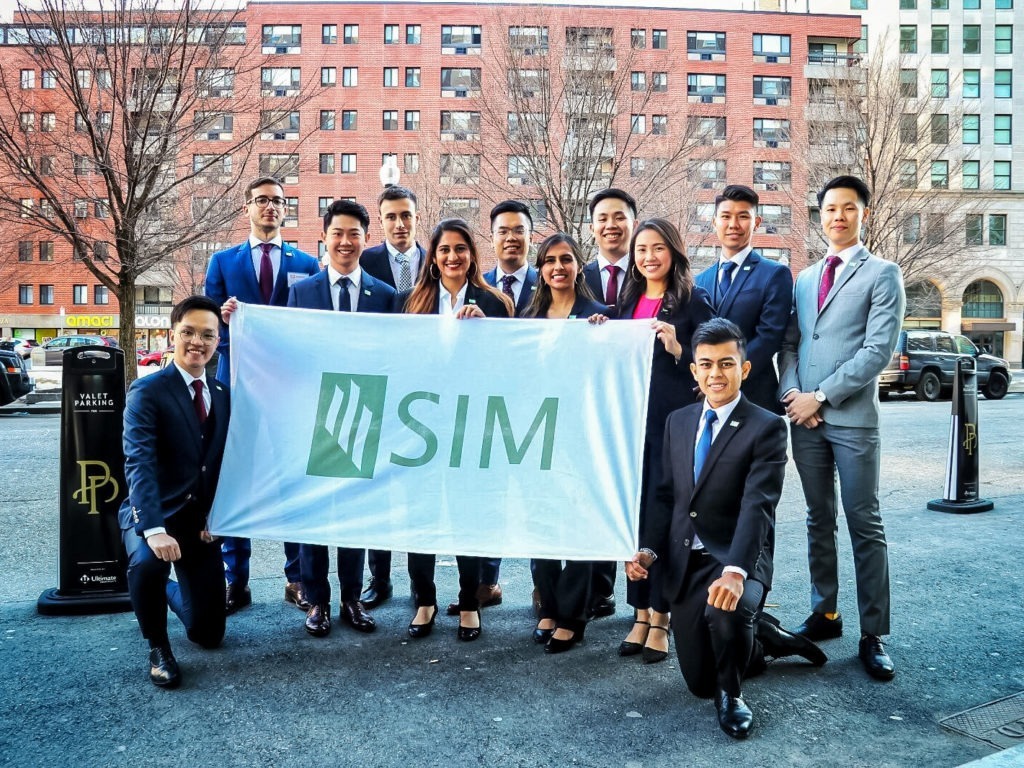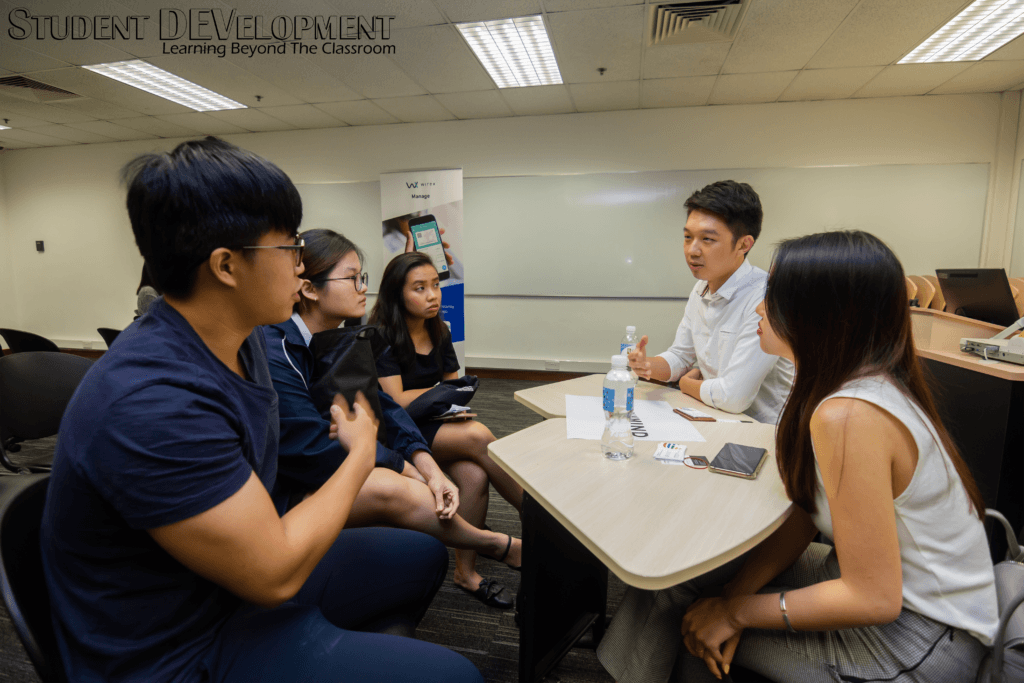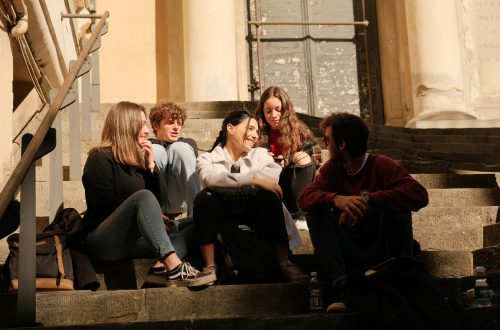Student-Centred Learning has become a defining feature of internationally recognised degrees, this is especially true for institutions like SIM Global Education (SIM GE) in Singapore. This teaching style shifts the focus from passive content delivery to active, personalised learning—empowering students to take ownership of their educational journey. In this article, we explore four key concepts that bring Student-Centred Learning to life within globally respected academic programmes. From building real-world skills and fostering campus engagement to nurturing cross-cultural communities and connecting local spirit with academic innovation, each concept demonstrates how Student-Centred Learning enhances both personal and professional growth. What makes this approach so effective in preparing students for global success?
Understanding Student-Centered Learning and Its Impact on Education

Student-Centered Learning has reshaped the landscape of modern education, prioritising your needs, interests, and learning styles to create a more engaging and meaningful academic experience. Unlike traditional lecture-based models, this approach positions you as an active participant in your own learning journey. Whether you’re enrolled in local programmes or international degrees offered through institutions like SIM Global Education (SIM GE), the impact of this model is far-reaching and transformative.
What Is Student-Centered Learning?
Student-Centered Learning is an educational approach that places you—the learner—at the core of the learning process. Rather than passively receiving information, you’re encouraged to collaborate, reflect, and apply knowledge in real-world scenarios. At SIM GE, this pedagogical philosophy is reflected across degree programmes that promote inquiry, autonomy, and global readiness.
In a student-centred environment, you’ll encounter a blend of teaching methods and experiential formats that prioritise:
- Active learning: Case studies, debates, and project-based tasks drive your participation.
- Personalised pathways: Learning is adapted to your pace, preferences, and prior knowledge.
- Collaborative settings: Peer learning, group work, and cross-cultural projects are integral.
- Reflective practices: Feedback loops, journaling, and self-assessment enhance your self-awareness.
Impact of Student-Centered Learning on Your Future

The long-term advantages of engaging in a student-centred academic environment include:
- Enhanced critical thinking and decision-making skills
- Greater confidence in communication and collaboration
- Higher retention of knowledge through active application
- Increased employability due to practical, hands-on experience
By taking responsibility for your learning, you not only gain academic knowledge but also develop essential life skills that employers increasingly value in 2026 and beyond.
Comparison: Student-Centered vs. Traditional Learning
| Aspect | Student-Centered Learning | Traditional Learning |
|---|---|---|
| Role of Learner | Active participant in learning | Passive recipient of information |
| Instruction Style | Facilitator guides learning | Teacher delivers content |
| Assessment | Project-based, formative feedback | Exam-focused, summative only |
| Learning Focus | Skills, reflection, application | Memorisation, content delivery |
Source: Adapted from academic models used at SIM GE, 2026
As a student navigating a globalised academic world, being part of a Student-Centered Learning ecosystem equips you for more than academic success—it prepares you for life. At SIM Global Education (SIM GE) in Singapore, your voice, interests, and personal development are placed at the centre of a supportive and dynamic learning framework. This learner-first model continues to define the future of international higher education in 2026 and beyond.
Creating a Student-Centred Learning Through Real‑World Skills and Campus Experience
To bring the principle of Student‑Centered Learning to life, you must go beyond lectures and assessments. The true transformation happens when students engage with real-world challenges, apply theory in practical settings, and cultivate their own agency through campus life. Within SIM Global Education (SIM GE) in Singapore, the integration of academic learning and real-life experience serves as a fundamental pillar of internationally recognised degree programmes.
Embedding Real‑World Skills into the Curriculum
One of the most powerful ways to centre learning on the student is by weaving real‑world tasks and industry exposure into coursework. For example, a business module might require you to act as a consultant for a Singapore SME, proposing improvements based on market analysis, financial modeling, and stakeholder interviews. A design or engineering project could partner you with local enterprises to prototype solutions for real constraints. By doing so, your learning is no longer abstract — it is directly relevant to professional life.
At SIM GE, curriculum design emphasises employability and skills transfer. The institution maintains close partnerships with industries in Singapore, enabling students to engage in internships, capstone projects, and research consultancy that mirror workplace demands. This alignment ensures that your degree is not only internationally recognised but also locally meaningful.
Campus Experience as a Living Laboratory
Your campus is not just a venue for lectures—it is a microcosm of society, a space for experimentation, collaboration, and growth. SIM’s campus in Clementi spans approximately 110,000 m² and houses not only teaching halls but sports and recreation complexes, a performing arts theatre, a student hub, wellness centre, and library facilities. Through these shared spaces, you are invited to act, not just absorb: you host events, initiate student clubs, execute peer mentoring, or run campaigns that reflect your values and vision.
Every corridor, every lounge, every club room becomes a chance to experiment with leadership, group dynamics, conflict resolution, and community building.
Co‑curricular Activities & Student Ambassador Programmes
Particularly in SIM, you have access to nearly 80 student clubs and co‑curricular activities (CCAs) spanning arts, culture, sports, special interest, and international student societies. Engagement in CCAs offers you experiential training in leadership, project planning, negotiation, and creative thinking. A student who leads an arts society or organizes a speaker series is, in effect, designing a mini-business, managing risk, liaising with stakeholders, and refining communication skills.
Additionally, the Student Ambassador programme at SIM GE invites you to serve as the face of the institution—guiding campus tours, talking to prospective students, hosting events, and representing SIM at external forums. In doing so, you cultivate confidence, public speaking ability, and cross‑cultural sensitivity. That transformation—of a student becoming a leader—is a vivid instantiation of student‑centred learning.
Synergy of Curriculum and Campus in Singapore’s Context
In Singapore, the environment is uniquely conducive to bridging theory and practice. With a vibrant business ecosystem, multinational headquarters, and government emphasis on innovation and skills, Singapore is a living lab for you to test ideas. SIM GE leverages this by facilitating internships, industry visits, hackathons, social impact projects, and partnerships with Singapore’s public and private sectors.
Here’s a comparative view of how different elements of SIM GE’s student‑centred approach converge:
| Element | Student Role | Skills Developed | Real-World Application |
|---|---|---|---|
| Capstone / Consultancy Projects | Team lead, problem solver | Data analysis, negotiation, reporting | Work with Singapore SMEs or NGOs |
| Co‑curricular Activities (Clubs / Societies) | Event organizer, creative director | Project management, budgeting, stakeholder engagement | Host campus talks, charity drives, exhibitions |
| Student Ambassador Programme | Institutional liaison, communicator | Public speaking, cross-cultural communication, confidence | Campus tours, outreach, open houses |
| Industry Internships / Industry Visits | Practitioner-in‑training | Workplace tools, networking, domain-specific skills | Intern with Singapore firms, conduct site visits |
Note: Table content synthesised from SIM GE programme descriptions and student life documentation as of 2026.
Outcomes: Empowered Learners and Global-Ready Graduates
When you following learner‑driven pedagogy on your own agency—through tackling practical problems, steering initiatives, and contributing to your community—you become not a passive recipient but an active creator. Graduates of this model emerge with confidence, adaptability, and a portfolio of real experiences to showcase. In the SIM GE environment, this means graduating not just with a degree but with a track record of initiative and collaboration.
Moreover, by situating this learning in Singapore’s dynamic environment, you gain a dual advantage: your theoretical acuity is sharpened by practice, and your cross‑cultural and professional competencies are matured in a global yet familiar context. Through this fusion of Student‑Centered Learning, real‑world skills, and campus experience, you embody the kind of learner every international recognised degree aspires to nurture.
Student‑Centred Learning and the Power of Community: Clubs, Societies & International Exposure
When you think of Student‑Centered Learning, you might focus on pedagogy, assessments, or flipped classrooms. But one of the most potent expressions of this concept lies in how your social and community environment supports your growth. At SIM GE in Singapore, the interplay among clubs, societies, and international exposure becomes a vehicle for deeper learning, agency, and cross‑cultural readiness.
1. Clubs and Societies as Living Learning Hubs
In SIM’s ecosystem, each one is more than a leisure outlet — they are platforms where you can ideate, experiment, lead, fail, and recalibrate.
For example, joining the Business Strategy Club or Innovation & Networking Society lets you workshop case competitions, pitch to industry mentors, or organize speaker series. Within these societies, you negotiate resources, manage logistics, and liaise with external stakeholders — much like mini enterprises. Meanwhile, cultural and international societies (such as Chinese National Network, IMMIX, Malaysian Community) help you ground your identity, learn intercultural communication, and host events that resonate across multiple student cohorts. (sim.edu.sg)
Within such spaces, the learning is student‑owned. You choose your project, recruit a team, iterate, and deliver — with faculty or staff as mentors, not rulers. That is the spirit of student‑centred learning in action.
2. Student Ambassadors: Bridging Community, Identity & Voice
The Student Ambassador programme at SIM GE embodies how community roles can deepen agency and professional readiness. As a student ambassador, you host campus tours, represent SIM at events, mentor prospective students, and share lived experiences. Over time, you become a trusted “translator” between institutional goals and student narratives.
This role develops your public speaking, cross‑cultural empathy, storytelling, and event coordination skills. It is not simply promotional: you help shape how SIM Global Education is perceived, and in doing so, you internalize a leadership posture. In short, you become a co‑creator of the student community — rather than merely a consumer of it.
3. Enriching Learning via International Exposure
To complement campus involvement, SIM GE fosters initiatives that push you beyond Singapore’s shores or into global contexts. Many societies partner with institutions abroad, arrange exchange programmes, host virtual international summits, or invite global guest speakers. Through these cross‑border interactions, you test your worldview, adapt to unfamiliar norms, and develop global fluency.
A club might co‑organize a joint hackathon with a partner university in Australia, or conduct virtual cultural exchange sessions with students in Europe or Asia. These experiences magnify your capacity to collaborate across distances, time zones, language differences, and cultural expectations. That aligns squarely with the goals of an internationally recognised degree.
4. Comparative Snapshot: Roles, Skills & Impact
| Role / Platform | Your Action | Core Skills Gained | Student‑Centred Impact |
|---|---|---|---|
| Club / Society Leader | Design and lead a project or event | Project management, conflict resolution, budgeting | Ownership over learning ecosystem |
| Club Member / Contributor | Participate, collaborate, propose ideas | Teamwork, creative ideation, discipline | You define your growth path |
| Student Ambassador | Represent, mentor, host, outreach | Communication, cross‑cultural empathy, leadership | Your voice shapes institutional narrative |
| International Exposure (Exchange / Virtual) | Engage with global peers or projects | Adaptability, intercultural negotiation, autonomy | Your classroom is borderless |
Note: Table synthesised from SIM GE programme descriptions as of 2026.
5. Why This Matters for Internationally Recognised Degrees
In a global hiring landscape, employers increasingly look beyond transcripts. They seek evidence that a candidate can initiate, adapt, and lead in ambiguity. By leveraging clubs, societies, ambassador roles, and international exposure, SIM GE activates student‑centred learning beyond pedagogy: it becomes your lived reality.
For you, this means that your degree is enriched not just by classroom credits, but by community engagement, global competencies, and a personal narrative of growth. In Singapore and beyond, that narrative equips you to transition confidently from student to contributor to community, embodying what student‑centred learning in an internationally recognised degree should be.
Connecting Local Spirit with Student‑Centred Learning Through Innovative Campus Life
In Singapore, higher education institutions increasingly integrate the local cultural, social, and spatial context into their pedagogical models. At SIM Global Education (SIM GE), your campus life is not a mere backdrop — it is a deliberate extension of Student‑Centered Learning. By rooting student agency within Singapore’s local spirit, SIM GE cultivates belonging, experimentation, and innovation in the heart of your daily experience.
Campus as Cultural Canvas and Learning Landscape
The Singaporean ethos of multicultural harmony, civic responsibility, and design pragmatism infuses SIM’s physical campus. The Clementi campus spans about 110,000 m² and is composed of four academic blocks, complemented by a wellness centre, multipurpose halls, performance theatre, and open courtyards. These spaces are purposely designed not only to host classes but to invite you to occupy them creatively — through exhibitions, pop‑up workshops, dialogue circles, and collaborative prototyping.
When you host a cultural festival in the atrium, stage a performance on the theatre stage, or run a pop‑up maker stall along verandahs, the campus becomes your canvas. Thus, your campus life aligns with that core principle: that learning is immersive, experiential, and student‑led.
Local Spirit in Co‑curricular Clubs & Identity Anchors
SIM offers a wide range of co-curricular clubs and societies. Many of these groups reflect Singapore’s rich multicultural heritage and foster strong connections with the local community. Societies such as the Malay Cultural & Muslim Society, Chinese National Network, and Singapore Affairs Society help deepen your engagement with local traditions, civic conversations, and shared national values.
When your Malay society organizes a Hari Raya bazaar, or the Singapore Affairs Society stages a forum on national issues, you are engaging with local identity through student‑centred agency. You decide the topic, coordinate logistics, negotiate budgets, and deliver value to fellow students. In doing so, you are practicing leadership under local frames — cultivating a sense of rootedness as you develop global readiness.
Experiential Programming with Local Flavor
To reinforce the synergy between campus life and place, SIM arranges local immersion programmes, community projects, and civic engagements. For example, clubs may organize heritage walks through nearby districts, collaborative workshops with Singaporean NGOs, or design challenges tied to Singapore’s urban policies (e.g. “reimagine our HDB void decks”).
These initiatives transform the city and campus into an extended classroom. You become a co‑designer of your own learning environment, applying theory directly to Singapore’s living context. The campus then acts not only as infrastructure, but as a bridge — between the local and the student‑driven.
Comparative View: Campus Innovations & Local Integration
| Innovation Feature | Student Agency Role | Local Spirit Embedded |
|---|---|---|
| Open Courtyard Pop‑up Studios | You design and stage mini‑exhibits or workshops | Reflects Singapore’s public‑space culture |
| Performing Arts Theatre Events | Organise cultural performances or forums | Echoes local multicultural performance traditions |
| Club‑led Civic Projects | Project scoping, stakeholder engagement, execution | Tied to Singapore’s social or urban issues |
| Heritage Walks / Citizen Labs | Plan route, research, engage participants | Connects campus with Singapore’s built environment |
Note: Table is a conceptual mapping aligned with SIM campus design and co‑curricular offerings as of 2026.
Benefits: Belonging, Innovation, and Agency
By connecting local spirit with Student‑Centered Learning, your experience at SIM GE becomes deeply layered. You develop stronger belonging — because you are not footnoted in the institution, you live its pulse. You learn innovation: when you design events in real Singapore settings, you iterate, respond to constraints, and test relevance. And you cultivate agency: you don’t just consume learning — you co‑architect it, rooted in your place, preparing you for global contexts with local foundation.
In sum, SIM’s campus life is not decorative — it is part of the pedagogy. You are invited to design, lead, and embed your learning in Singapore’s local spirit. That synergy is what elevates a degree at SIM GE from a certificate to a living, student‑centred formation.
Conclusion
Student-Centred Learning is at the heart of globally relevant education, especially within internationally recognised degrees offered by institutions like SIM GE. By focusing on student agency, real-world skills, and meaningful campus engagement, this teaching style builds a dynamic and adaptable learning environment. As we’ve seen across the four key concepts—from hands-on learning experiences to culturally rich student life—Student-Centred Learning equips learners not only to succeed academically but to thrive in diverse, real-world contexts. For students seeking an education that goes beyond textbooks and truly prepares them for international opportunities, embracing this approach is a strategic step forward. Explore how SIM Global Education can help you take that next step with confidence.
Frequently Asked Questions (FAQs):
🎥What makes student-centered learning effective?
Student-centered learning is effective because it fosters autonomy, critical thinking, and engagement by putting students’ needs, interests, and learning styles at the heart of the educational process.
🎥How does SIM GE apply real-world learning?
SIM GE integrates real-world learning through project-based coursework, industry engagement, and co-curricular experiences that mirror actual workplace dynamics in Singapore and beyond.
🎥What clubs at SIM GE support leadership growth?
Clubs like the Innovation & Networking Society and Student Ambassador Program at SIM GE develop leadership by encouraging you to lead events, manage teams, and represent the institution in public forums.
🎥Why is cultural exposure important in learning?
Cultural exposure enhances student-centered learning by building empathy, adaptability, and global awareness—crucial skills in international education and future careers.
🎥How does campus life support international students?
Campus life at SIM GE supports international students through inclusive societies, orientation programs, peer mentoring, and events that help students integrate and thrive socially and academically.
References:
https://xqsuperschool.org/teaching-learning/what-is-student-centered-learning/
https://lincs.ed.gov/sites/default/files/6%20_TEAL_Student-Centered.pdf
https://www.edutopia.org/blog/student-centered-learning-starts-with-teacher-john-mccarthy









